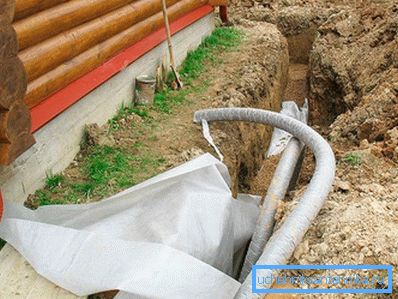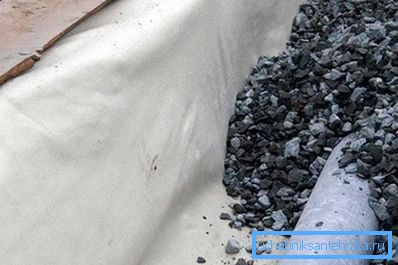Deep drainage of the plot itself
Drainage of land is as important as the construction of a house. People who have been built on sandy soil with a deep location of groundwater, do not face this problem. But when your site is on clay soil, and even high groundwater is located, only the installation of the drainage system will save your yard and buildings from excess water. After all, constant dampness can destroy the entire crop in the garden, trees, and even your home.
What it consists of

The drainage system consists of pipes laid in a trench along the entire perimeter of the site, with the withdrawal of water flow into a ravine or other designated place. As well as manholes for pumping out water and cleaning the system. Deep drainage is of three types:
- In the vertical form of drainage tubular wells are used that are installed at the depth of the groundwater. With the help of pumping stations, the water from them is constantly pumped out.
- Horizontal drainage consists of a network of pipes laid along the entire perimeter of the site. Water passing through the filter enters the pipe and is discharged into the ravine.
- Combined drainage consists of the two systems described above. It is also very complex and is not normally used on private sites.
Preparation for construction

Before proceeding with the installation of deep drainage, it is necessary to make a plan for its location and calculate the diameter of the pipes.
Tip! To calculate the diameter of the pipe, it is necessary to perform design and survey work, which includes the study of the soil and the location of water on the site. These works are not cheap, so the owners of their sites buy pipes at random. The drainage pipe with a diameter of 110 mm is generally used.
The plan for laying the pipeline is carried out after studying the surface of the section with the help of a leveling device. In the absence of such a device, it is possible to observe during rain the places with a large accumulation of water and the side of the slope where it flows.
Drainage installation

Stages:
- On the marked site dig a trench with a bias towards the drain. The slope angle for laying the pipe should be 1 cm by 2 m of the pipe, and the trench depth depends on the depth of soil freezing and the level of ground water. Practice shows that basically the depth of the trench is 60? 100 cm.
- At the bottom of the trench, pour a layer of sand 10 cm, smooth and tamp. Lay the geotextile canvas of such width on the sand over the entire trench to wrap the pipe with rubble along its edges.
- A layer of crushed stone with a thickness of 20 cm poured on the canvas. Connect the pipes with high quality so that they do not diverge over time. At all turns of the pipeline, install corner wells for cleaning the system and emergency pumping of water. Wells can be made from any available material. The main thing that the bottom was sealed. At the end of the entire system also install a well. All wastewater will be collected in it and taken to a ravine or other place.
- You lay the laid pipe on top with the same layer of rubble and wrap it with free edges of the geotextile fabric. Do not rush to dig a trench. If you have time to wait, then let it rain, and you look at the operation of the system. In the pit should not be a single puddle. Look at the outlet drain, whether the water flows well. Look in the wells so that they are not crowded. If everything is in order, then your system is mounted correctly, and it can be buried with remnants of soil.
Making a drainage filter

There is such a situation: the groundwater is high, and the clay soil does not have time to pass rainwater to the drainage system through a layer of soil poured on top of the drainage. This situation threatens to flood the foundation of the house. To drain this water will need to pour an additional drain filter. There is nothing difficult in this work. Let's take a look at how to make a filter mound for draining water.
The drainage pipe laid in the trench should not be poured on top with the remnants of the soil. Instead, fill the trench with fine gravel, then coarse sand, and fine gravel from above. The top of the rubble can be covered with geotextile and covered with a thin layer of earth. Through such a multi-layer filter, water will be absorbed faster and get into the drainage.
Tip! During operation of the system, periodically inspect the wells and, if necessary, clean them. A well-working drainage system will take care of the safety of your site and all buildings from excessive moisture.